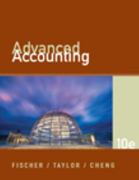Question
On December 31, Year 2, RUBY Inc. of Dartmouth acquired 90% of the voting shares of Balli Limited of Luxemburg, for 690,000 euros (). On
On December 31, Year 2, RUBY Inc. of Dartmouth acquired 90% of the voting shares of Balli Limited of Luxemburg, for 690,000 euros (). On the acquisition date, the fair values equalled the carrying amounts for all of Balli's identifiable assets and liabilities. Selected account balances from Balli's general ledger on December 31, Year 2, were as follows:
Equipment 150,000
Building 1,350,000
Accumulated amortization 195,000
Common shares 600,000
Retained earnings 96,000
Balli purchased the building and equipment on January 1, Year 1.
The condensed trial balance of Balli for the year ending December 31, Year 5, was as follows:
Accounts receivable 197,000
Inventory 255,000
Building 1,350,000
Equipment 350,000
Cost of goods purchased 1,080,000
Change in inventory 120,000
Amortization expense 130,000
Other expenses 470,000
Dividends paid 300,000
Total debits 4,252,000
Current monetary liabilities 682,000
Common shares 600,000
Retained earnings, beginning 300,000
Sales 2,250,000
Accumulated amortization 420,000
Total credits 4,252,000
Additional Information
Balli's sales, inventory purchases, and other expenses occurred uniformly over the year.
Balli's inventory on hand at the end of each year was purchased uniformly over the last quarter. On December 31, Year 4, the inventories totalled 375,000, and on December 31, Year 5, they totalled 255,000.
On January 1, Year 5, Balli purchased equipment for 200,000. The equipment has an estimated useful life of eight years and a residual value of 5,000. Balli uses the double-declining-balance method to calculate amortization expense. There were no other purchases of property, plant, and equipment between Year 2 and Year 5.
The dividends were declared and paid on January 1, Year 5.
The exchange rates for the euro and the Canadian dollar were as follows:
Jan. 1, Year 1 $1 = 0.50
Dec. 31, Year 2 $1 = 0.60
Average for the Year 4 fourth-quarter $1 = 0.68
Dec. 31, Year 4/Jan. 1, Year 5 $1 = 0.70
Dec. 31, Year 5 $1 = 0.80
Average for Year 5 $1 = 0.76
Average for the Year 5 fourth-quarter $1 = 0.79
Required
(a) Translate into Canadian dollars the following items on Balli's financial statements for the year ended December 31, Year 5, assuming that Balli's functional currency is the Canadian dollar:
(I) Accounts receivable
(ii) Inventory
(iii) Equipment
(iv) Accumulated amortization
(v) Common shares
(b) Translate into Canadian dollars the following items on Balli's financial statements for the year ended December 31, Year 5, assuming that Balli's functional currency is the euro:
(I) Cost of goods purchased
(ii) Amortization expense
(iii) Inventory
(iv) Common shares
(c) For Balli, which functional currency would show the strongest current ratio for the company's translated financial statements? Briefly explain.
(d) develop an independent calculation of the unrealized exchange gains or losses to be included in other comprehensive income for Year 5, assuming that Balli's functional currency is the euro.
Step by Step Solution
There are 3 Steps involved in it
Step: 1

Get Instant Access to Expert-Tailored Solutions
See step-by-step solutions with expert insights and AI powered tools for academic success
Step: 2

Step: 3

Ace Your Homework with AI
Get the answers you need in no time with our AI-driven, step-by-step assistance
Get Started


